World DefinitionThe term "world" typically refers to the entire Earth, including all living things. The blue, cloud-covered planet we can easily recognize from satellite images seems surprisingly stable, much like the lapis lazuli gemstone it resembles. A familiar ecosystem is supported by continents and oceans enclosed by an oxygen-rich atmosphere. Emergence Of the World1. Prehistoric PeriodThe Prehistoric Period typically spans from roughly 2.5 million years before to 1,200 B.C., or the time when there was life for humans before records recorded human activity. Generally speaking, it can be divided into the ages of stone, bronze, and Iron Age. This huge period, which ended approximately three thousand and 200 years bc (dates vary by region), was a time of considerable change, from the development of hunting gear to improvements in food and agriculture production to the earliest manifestations of art and religion. This era, which is divided into the Palaeolithic, Mesolithic, and Neolithic periods (also known as the Old Stone Age, Middle Stone Age, and New Stone Age, respectively), is characterized by the utilization of tools by our earliest human ancestors (who developed around 300,000 B.C.), as well as the eventual shift to a way of life of collecting and hunting to farming and growing food. Early humans coexisted on Earth throughout this time with several now-extinct relatives of the hominin species, notably Neanderthals and Denisovans. 2. The Old Stone AgeEarly humans were gatherers and hunters during the Palaeolithic period (approximately two million and a half years ago to ten thousand B.C.). They resided in tepees, primitive homes, or caves. In addition to the crude stone axes, they also created instruments made of bone and simple stones for killing wild animals and birds. They cooked their dinner, including mammoths with woolly fur, deer, and bison, using controlled fire. They also hunted and collected fruit, nuts, and berries. Palaeolithic humans were the first to create and preserve works of art. They etched people, animals, and signs using minerals, ochres, burned bone meal, and charcoal combined with water, animal fats, and tree sap. Additionally, they created little sculptures out of bones, clay, antlers, and stones. 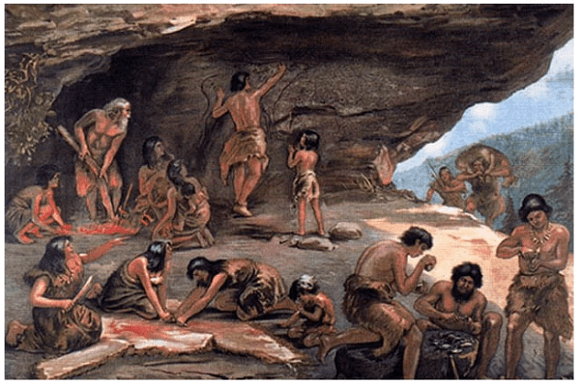
Many large mammals went extinct at the end of this time, and increasing sea levels and climatic change finally forced man to migrate. Humans employed small stone tools that were now polished and occasionally fashioned with points from the Mesolithic era (approximately 10,000 B.C. and 8,000 B.C.). These tools were linked to horns, bone, or timber to serve as arrows and spears. Near streams and other sources of water, they frequently camped there while living nomadic lives. During this time, agriculture was developed, which prompted more enduring communities in villages. Neolithic humankind changed from a life of hunting and gathering to one oriented on agriculture and food production between around 8,000 BC and 3,000 BC. They raised domesticated creatures and cereal crops. They moved onto the plains and proceeded to cultivate the land and plough it with the aid of polished hand axes and adzes. Tools made farming, home construction, and many artistic disciplines?including pottery, embroidery, and weaving?better. 3. The Bronze AgeAs bronze, an alloy of tin and copper, was found, metalworking techniques advanced in the age of bronze (around 3000 B.C. to 1,300 B.C.). The tougher metals succeeded their stone predecessors and have since been employed for weapons and tools. It also sparked the invention of the wheel and the ox-drawn plough. 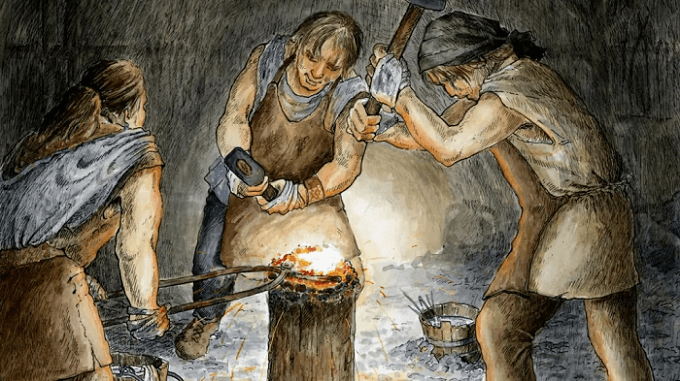
The potter's wheel was invented during this period, and textiles also saw advancements. Wool was used mostly for apparel, including skirts, kilts, tunics, and cloaks. The wheel of transportation & the ox-drawn plough were also inspired by it. During this time, the wheel used by potters was created, and textiles also advanced. Wool was mostly utilized for clothing, such as dresses, kilts, tunics, and cloaks. Along with the beginnings of organized government, law, and warfare, the era of bronze also saw the birth of religion, most famously among the ancient Egyptians who built the pyramids. 4. The Iron AgeThe Iron Age, which lasted from around 1,300 B.C. to 900 B.C., began with finding ways of heating and forging iron. At that point, metal was valued higher than precious metals, and wrought iron was more practical than bronze. Wrought iron would eventually give way to steel with the invention of iron smelting. 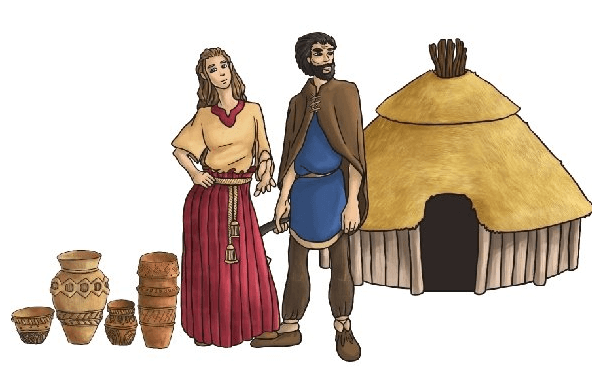
Along with the widespread use of steel for tools and weaponry, architecture also advanced during this time. Four-room dwellings, some of which included animal stables, joined more basic hill forts, royal palaces, temples, and other religious buildings. Early urban development also included the construction of housing blocks beside paved or sidewalks and the installation of water infrastructure. The Ancient Historical Period began as agriculture, art, and religion all advanced, as writing techniques and written records, particularly alphabets, started to appear. Mesopotamia-Science, Inventions and TechnologyWritingThe ancient Mesopotamian civilizations made significant contributions to science and technology. The most important advancement of the Mesopotamian culture was the invention of writing by the Sumerians. The initial written language was developed by the Sumerians. The Sumerians created the earliest written language. The population of Sumer needed a system for keeping track of financial transactions, property rights, and official documents as their settlements expanded into cities. The Sumerians recorded their events on clay tablets with visual representations around 3300 BC. MathematicsMathematics Similar to how we use base 10, the Mesopotamians had an array system with a base of 60. They used a 60-second minute & a 60 minutes hour, which is still how we divide time today. The circle was divided into 360 degrees as well. They were proficient in a variety of mathematical concepts, including fractions, quadratic and cubic formulas, multiplication, division, and addition. This was crucial for maintaining records and some of their big construction projects. The Mesopotamians developed methods for calculating the circumference and area of various geometric shapes, including rectangles, circles, and triangles. According to some evidence, they may have even known the Pythagorean Principle before Pythagoras recorded it. By figuring out the diameter of the circle, they could have even discovered pi. AstronomyThanks to their excellent calculations, Mesopotamian scientists were able to follow the movements of the Earth's Moon, planets, and stars. One notable achievement was the ability to predict the motions of numerous planets, which required logic, numbers, and a scientific method. The Mesopotamians developed the first calendar by monitoring the Moon's phases. It was the ancestor of the two Jewish & Greek calendars and had 12 lunar months. TechnologyThe Mesopotamians made numerous technological advancements. Additionally, they were the first to use a potter's wheel to produce better pottery, canals to provide saltwater to their crops, durable weapons and tools constructed from bronze metal (and later iron alloy), and weaving who woven wool into cloth. Middle AgesThe term "Middle Ages" really only tells us about the period of the Renaissance that came after it. Around the fourteenth century, European poets, thinkers, and artists started to reflect on and honour classical Greece and Rome's cultural and artistic heritage. As a result, they derided the time following the collapse of Rome as a "Middle" or even "Dark" era in which no significant advances in science, great works of art, or great leaders were born. When Rome fell, there was no single state or government that ruled the entire population of Europe. The Catholic Church, on the other hand, became the most significant institution during this period. Many of the authority kings, queens, and other leaders held came from their partnerships. Rise of IslamDuring this time, the Islamic world started to grow and become more powerful. Muslim forces captured a sizable area of the Near East and placed it under the rule of a single caliph after the death of the prophet Muhammad in 632 CE. The mediaeval Islamic world is over three times larger than the entire Christian world at its largest. The CrusadesAround the end of the 11th century, the Catholic Church began to approve armed trips, referred to as Crusades, to expel Muslim "infidels" out the Holy Land. Since thousands of people on both sides died, no one ever truly "won" the Crusades. They did promote a sense of cohesion among common Catholics across Christendom, and they generated an ardour for religion in many who might have otherwise felt alienated with the established Church. Art And ArchitectureMost European cathedrals were constructed in Romanesque architecture during the 10th - 13th centuries. With their thick stone walls, a few windows, round masonry arcs, and barrel-shaped vaults holding the roof, Romanesque churches are robust and substantial buildings. Church builders began using the famous Gothic architectural style from 1200. Gothic buildings, like the Benedictine Church of St. Denis in French and the recently restored Canterbury Cathedral in England, have huge stained-glass entrances, pointed vaults and arches (an Islamic design innovation), spires, and flying buttresses. Before the printing machine was invented in the fifteenth century, even printed content was a work of art. Books with illumination are handwritten sacred and secular texts that have colourful illustrations, gold or silver lettering, or other embellishments. They were created by workers in monastery (and subsequently at universities). Deadly DeathBetween 1347 and 1350, the bubonic plague, frequently referred to as the "Black Death," claimed the lives of about twenty million people in Europe, or 30% of the population of the continent. Twelve Black Sea ships arrived in the Sicilian seaport of Messina in October 1347, marking the beginning of the plague in Europe. Most of the crew members on board are deceased, while those still alive had black sores all over them that flowed blood and pus. Fever, chills, vomiting, diarrhoea, excruciating aches and pains, and eventually death were some signs of the Black Death. Victims may go to sleep feeling well and wake up dead. The death of sheep, goats, chickens, pigs, and even cows by the plague resulted in a wool shortage across Europe. Age Of ExplorationThe beginning of the 15th century marked the official start of the Era of Exploration, also known as the Era of Discovery, which lasted until the early 17th century. In pursuit of new trade routes, money, and knowledge, Europeans explored the world by water throughout this period. The era of Exploration had a profound impact on the world, making geography the contemporary discipline it is today. The Portuguese undertook the earliest expeditions connected to the Age of Discovery. Although the Portuguese, Spanish, Italians, and various other seafarers had been cruising the Mediterranean for centuries, most sailors stuck close to shore or followed well-established routes between ports. That was altered by Prince Henry the Navigator, who encouraged sailors to venture outside the known sea lanes in search of uncharted trade routes to West Africa. The Discovery of New WorldThe Spanish had aspirations of discovering new trade routes with the Far East while the Portuguese were creating fresh maritime paths along Africa. In 1492, Italian-born Christopher Columbus, who worked for the Spanish kings, embarked on his maiden voyage. Columbus discovered the tiny island of San Salvador, which is in what is now known as the Bahamas, not India. The explorations of Columbus paved the way for the Spanish conquest of the Americas. The Aztec people of the nation of Mexico, the Inca Empire of the nation of Peru, and several other indigenous peoples invading the region of the Americas would be completely wiped out during the following century by men like Hernan Cortes of Mexico and Francisco Pizarro. End Of the EraEarly in the 17th century, when Europeans could easily travel around the world by sea thanks to technological breakthroughs and a greater understanding of the world, the era of Exploration ended. There was no longer a need to look for new routes due to the development of long-term settlements and colonies that established a system of trade and communication. Industrial RevolutionThe Industrial Revolution, which started in Great Britain in the middle of the 18th and early 19th centuries and eventually expanded over most of the world, was a time of significant mechanization and innovation. Coal and iron exploitation led to the British Industrial Revolution. Although the Industrial Revolution took place around 200 years ago, it had a significant impact on both the way individuals lived and how corporations ran. Capitalism and today's urban cities are products of manufacturing systems created during the Industrial Revolution. Before this time, most households relied on farming and mostly resided in rural areas. People started working for businesses with locations in cities for the initial time with the introduction of factories throughout the 18th century. With the help of innovations like the steam engine, production efficiency increased during the Industrial Revolution. The steam engine significantly decreased the amount of time needed to produce goods. More effective production led to lower product pricing, mostly as a result of lower labour costs, which opened the market to an entirely new set of consumers. 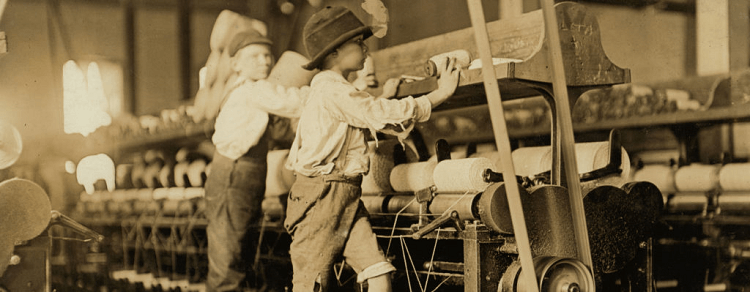
The Industrial Revolution resulted in more job options. Factory pay were more than what individuals were paid as farmers. As factories expanded, more supervisors and employees were required to run them in their final days which raised the number of posts open and total income. A dramatic rise in industry construction led to an increase in urban pollution. Not alone were factories polluted; as more people migrated into cities, the scarce resources there were depleted, creating miserable living conditions. Wars That the World WitnessedWorld War IOne World War: World War I, often known as the First World War or the Great War, was a global conflict that raged between 1914 and 1918 and affected most of the European nations, in addition to the Russian Federation, the US, the Near East, and several other regions. The conflict pitted the Central Powers?primarily Austria-Hungary, Germany, and Turkey?against the Allies?primarily Britain, France, Russia, Italy, Japan, and, beginning in the year 1917, the United States of America. At the end of it, the major powers were defeated. The war was practically unprecedented in terms of the quantity of loss of life, property destruction, and carnage. 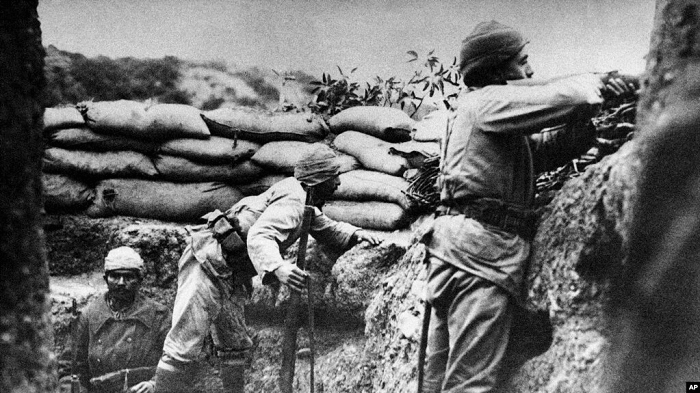
One of the key turning events in world history during the 20th century was World War I. The rise of the Bolsheviks in Russia, the overthrow of four powerful royal monarchies (in Germany, Russia, Austria-Hungary, and Turkey), and the subsequent destabilization of European society all contributed to the outbreak of World War II. The final surviving World War I veterans are American serviceman Frank Buckles (who passed away in February 2011), Australian serviceman Claude Choules (who passed away in May 2011), & British servicewoman Florence Green (who passed away in February 2012). World War IIOften referred to as the "second world war," this conflict lasted between 1939 to 1945 and nearly encompassed the entire planet. The major combatants were the Axis forces, which consisted of Germany, Italy, and Japan, and the Allies, which consisted of France, Britain, the United States of America, and and the Soviet Union, and also, to a lesser extent, China. The war, in numerous respects, continued the problems that the First World War left unresolved after an unpleasant 20-year hiatus. Around 40 and 50 million individuals died in World War II, the biggest and bloodiest conflict in history. World War II was one of the major turning points in the global history of the 20th century, in addition to World War I. It enabled a communist movement to later capture power in China, let the impact of the Soviet Union to grow to nations in eastern Europe, and clearly indicated a shift in the balance of authority against Western European states and towards the US and the Soviet Union. The Cold WarFollowing the end of WWII, the country of the Soviet Union, with its satellite governments and the United governments and its allies, engaged in a protracted power struggle referred to as the so-called Cold War. There was no direct battle among American and Soviet forces during the Cold War. Nevertheless, both superpowers persisted in fighting each other's proxy wars by political posturing, military cooperation, spying, disinformation, armament buildups, and financial backing. Throughout the ensuing decades, Europe's East-West divide remained constant. But conflict spread to Asia, Africa, and Latin America. Cold War tensions regularly intertwined with the battle to topple colonial administrations as superpowers competed to sway anti-colonial forces. 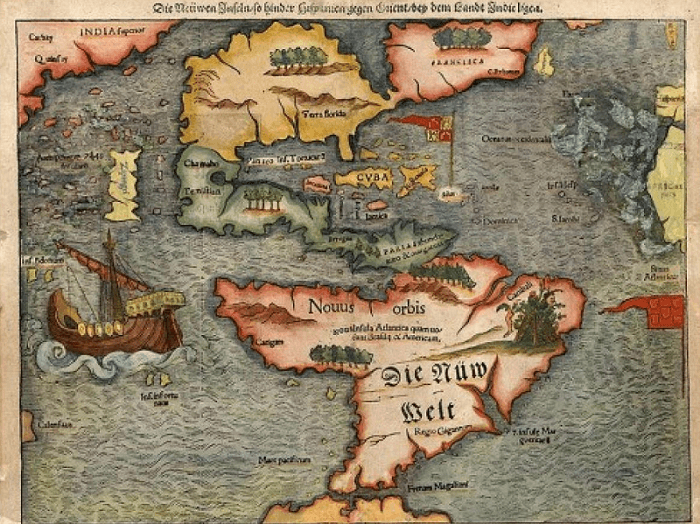
The globe's most populous country joined the Soviet Union's ranks as a Cold War foe in 1949 when the communists won the Chinese civil war. In response to North Korea's invasion of South Korea in 1950, the U.S. and the U.N. dispatched military assistance and personnel. Communist China invaded to defend North Korea, and three years of terrible fighting ended with a truce in 1953. Vietnamese colonial French rule was overthrown in 1954. To avert presidential elections that could have brought South Vietnam under the communist rule of North Vietnam, the United States moved to establish a military-led government in that country. In reaction to the danger, the Southeast Asian Treaty Organization (SEATO) was established in 1955 to halt communist growth. President Eisenhower also dispatched the South Vietnamese government 700 troops and financial and other support. When John F. Kennedy, Jr. took office, the effort was faltering. Closer to home, the Fidel Castro-led Cuban resistance movement overthrew Fulgencio Batista's pro-American military dictatorship in 1959. Cuba, under Castro, swiftly became economically and militarily reliant on the former Soviet Union. Just 90 kilometers off the shores of Florida, the principal Cold War adversary of the United States had erected a base. Modern Challenges of The World1. Climate ChangeThe steadily increasing global temperatures are one of the main issues facing our planet today. According to research, the likelihood of global warming exceeding 3.5 degrees Celsius by 2100 is 50%, while warming exceeding 4.7 degrees Celsius is 10% (compared to temperatures observed between 1850 and 1900). As a result, weather patterns would change more drastically, there would be a shortage of resources and food, and diseases would spread more quickly. 2. Water ContaminationLife cannot exist without water, a seemingly obvious concept many people ignore. Communities are forced to relocate in pursuit of clean water by negligent management and unreasonable use. The problem of industries polluting subsurface water is getting worse. 3. PandemicsCOVID-19 and influenza epidemics are two instances of pandemics that show how susceptible we are to contagious viruses, many of which start in animals. Pandemic-related emotions sometimes involve anxiety and panic. HIV/AIDS, malaria, and Ebola, which have all remained lethal for decades, are other infectious diseases that merit study. 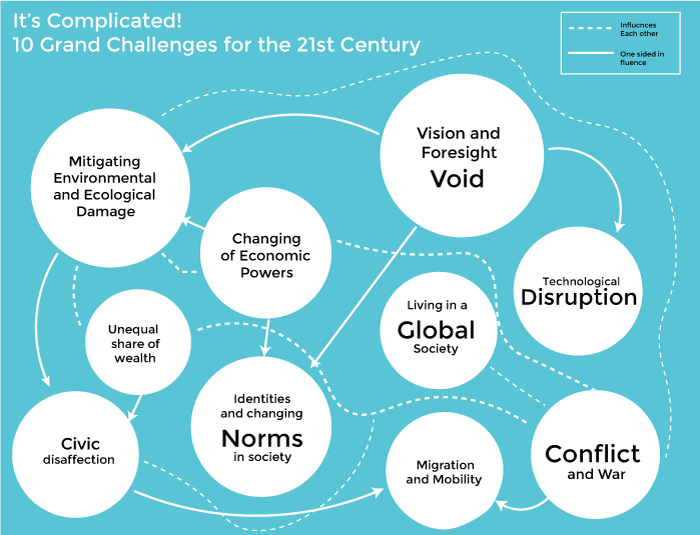
4. Environmental FactorsPollution from the air and climate change are major environmental factors that harm our health. Hurricanes, floods, and droughts facilitate large-scale disease spread. 5. Disparity and Poor Access to HealthcareMany families find it nearly impossible to afford healthcare due to poor availability of healthcare, rising infant mortality rates, particularly in low-income countries, and income disparity worldwide. ConclusionIn the end, describing the world involves a difficult task that involves many different facets and viewpoints. The natural setting that supports life on Earth, including its ecological systems, can be thought of as the "world." The wide variety of living things that occupy the earth, especially individuals and their communities, traditions, and conversations, are also included. Taking into account the interconnected nature of nations, economics, and political systems, the globe can also be seen from a global viewpoint. It includes the complexities of business, diplomacy, and relationships between nations as well as the quest for world peace and harmony.
Next TopicSegment Definition
|
 For Videos Join Our Youtube Channel: Join Now
For Videos Join Our Youtube Channel: Join Now
Feedback
- Send your Feedback to [email protected]
Help Others, Please Share










